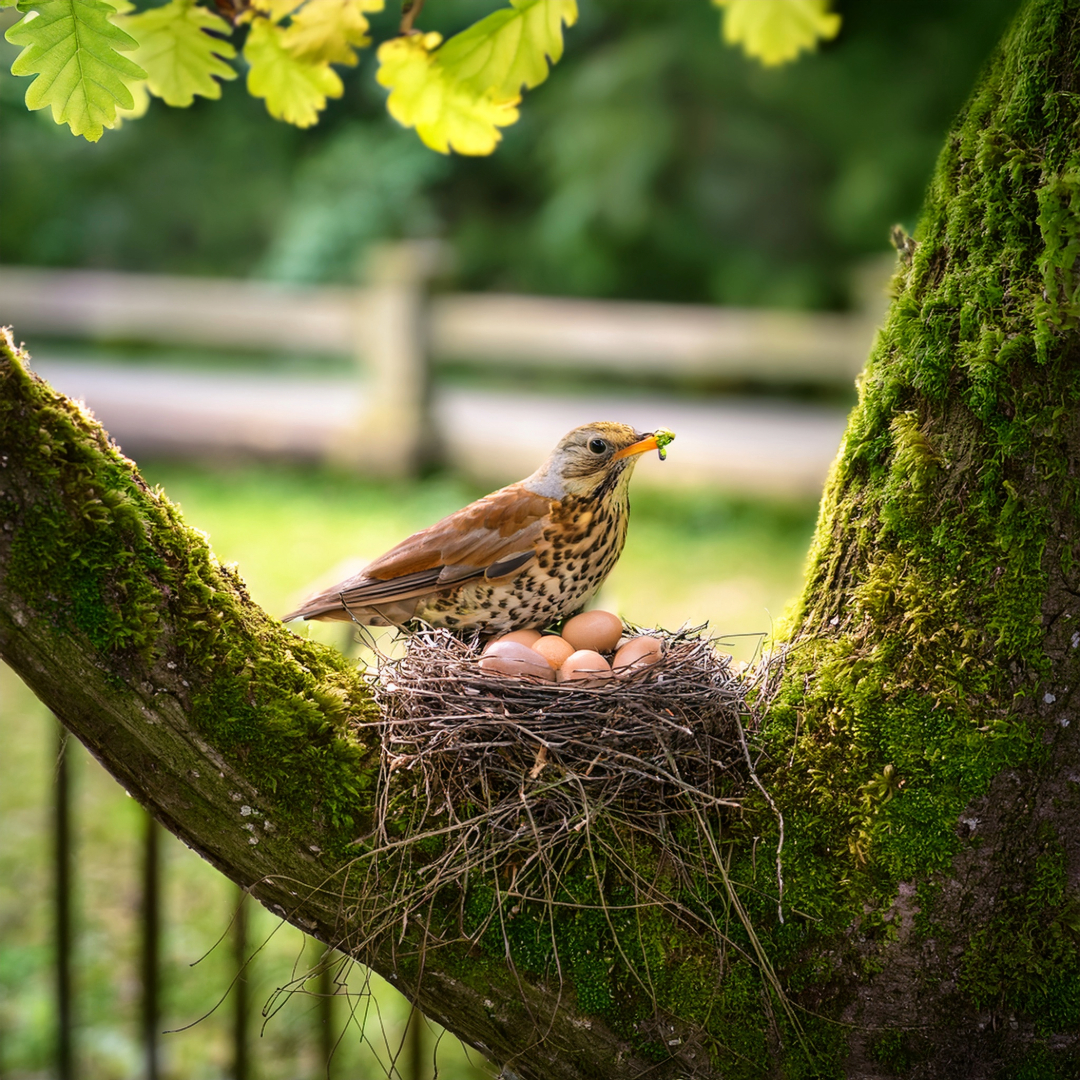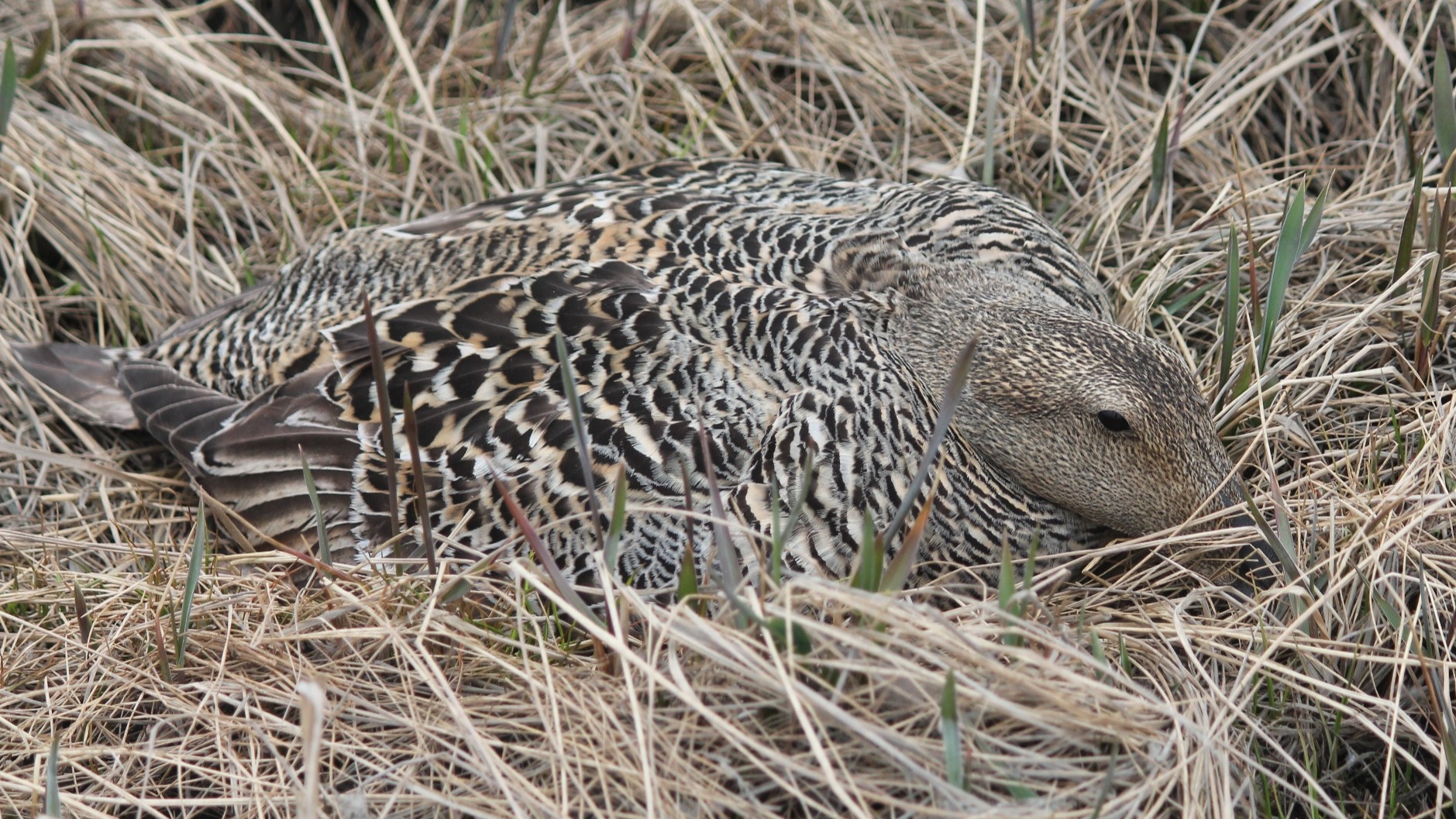From long-tailed tits weaving gossamer cradles to woodcocks vanishing among dead leaves, May reveals London’s most ingenious avian architects. Did you know blue tits deliver 900 caterpillars a day? Or that nuthatches plaster their tree holes like master craftsmen? Return on 05 May to explore the capital’s hidden nurseries—where swifts nest in Victorian eaves, nightingales sing directly above their secrets, and eider ducks defy danger with nothing but down. The city’s wildest parenting stories are unfolding just out of sight...
Most birds are now either building a nest, brooding eggs or attending their young. Throughout this period they often prefer to be secretive until they start searching for food for their fledglings. By the end of May, all our arrivals will be nesting and those preferring to nest further north will have either arrived or will still be on their way. The construction of nests during this period varies from doing virtually nothing as is the case with peregrine falcons or making two thousand or more journeys collecting material as is the case in long-tailed tits. Swifts collect all their material on the wing whereas woodpeckers just place a few wood chippings down. It is now time to take care not to step inadvertently on ‘frozen’ chicks in habitats where there are ground-nesting birds. Brooding females in such habitats are usually excellently camouflaged, none more so than the woodcock which, among dead leaves, is only betrayed by its large, shiny black eye. If disturbed by a nearby foot, she will lie on her side pretending to be wounded to deflect any interest in her eggs. The innocent, foolish behaviour of fledglings is one of the great delights of the month and their nursery and cradle notes are among the most enjoyable sounds. The feeding and care of young can sometimes verge on the obsessional. Blue tits are known to collect nine hundred caterpillars a day for their nestlings, delivering them every two or three minutes for all the hours of daylight.
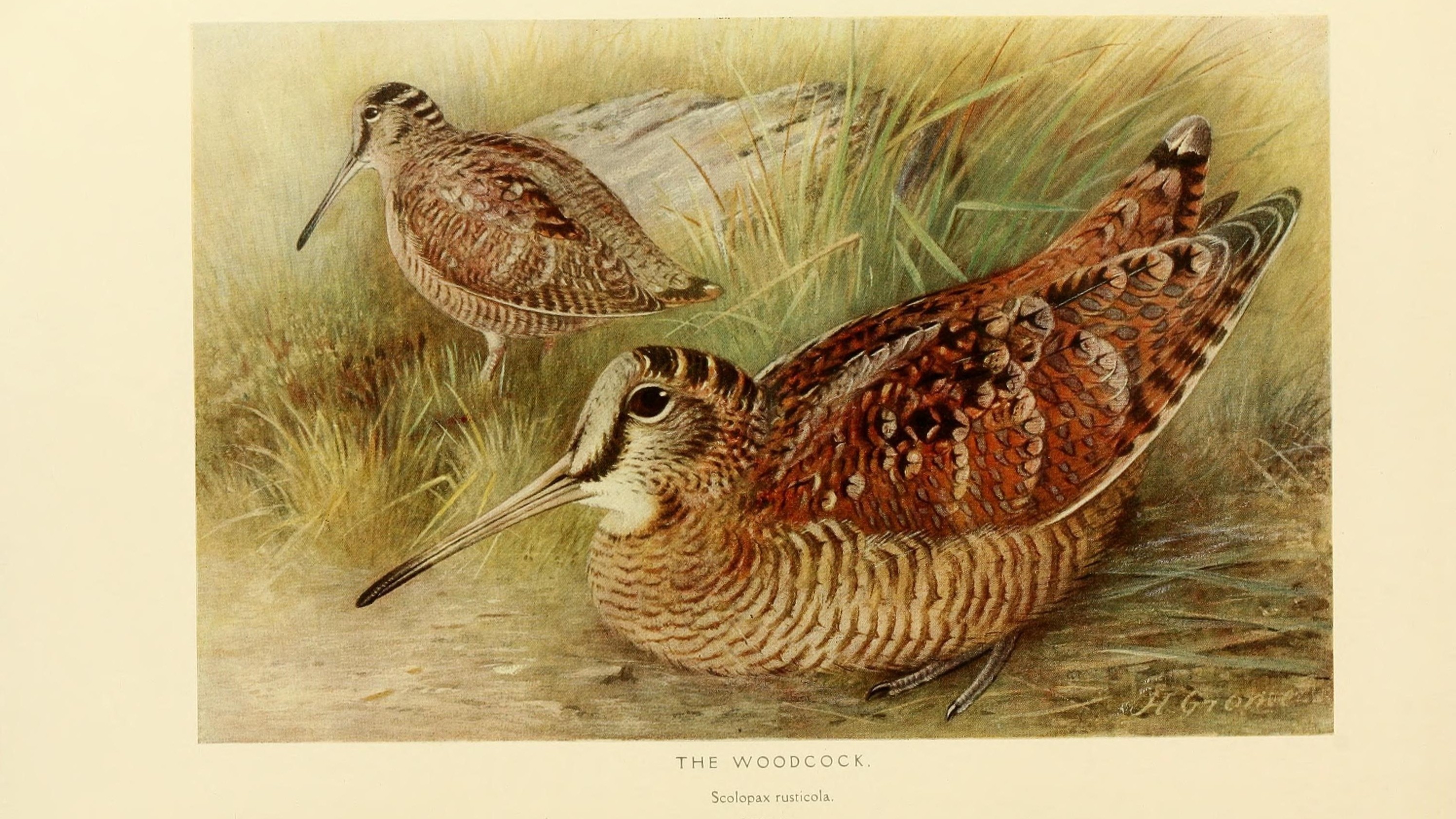

Nests in London not only show a remarkable range in construction, but also in location. At this time of year some knowledge of preferred locations, coupled with seeing birds with food in their mouths, can betray the position of the nest and so help in ensuring it suffers no unnecessary disturbance. Birds that traditionally build early in the month include tree-creeper, lesser redpoll, nightingale, lesser whitethroat, tree pipit and reed bunting. Although it differs a little depending upon the weather, the middle of the month often sees nest activity from redstarts, willow warblers, blackcap, tree pipit, whitethroat, whinchat and swallow. Towards the end of the month it is usually time to build for garden warbler, sedge warbler, grasshopper warbler, wood warbler, corn bunting, wren, spotted flycatcher, green woodpecker, lesser spotted woodpecker, great spotted woodpecker, red-backed shrike, house martin, swift, hobby, nightjar, quail, redstart, yellowhammer and common tern. Common terns, not usually seen too often, may even now be seen collecting food in numbers along the Thames especially in the Shepperton area.
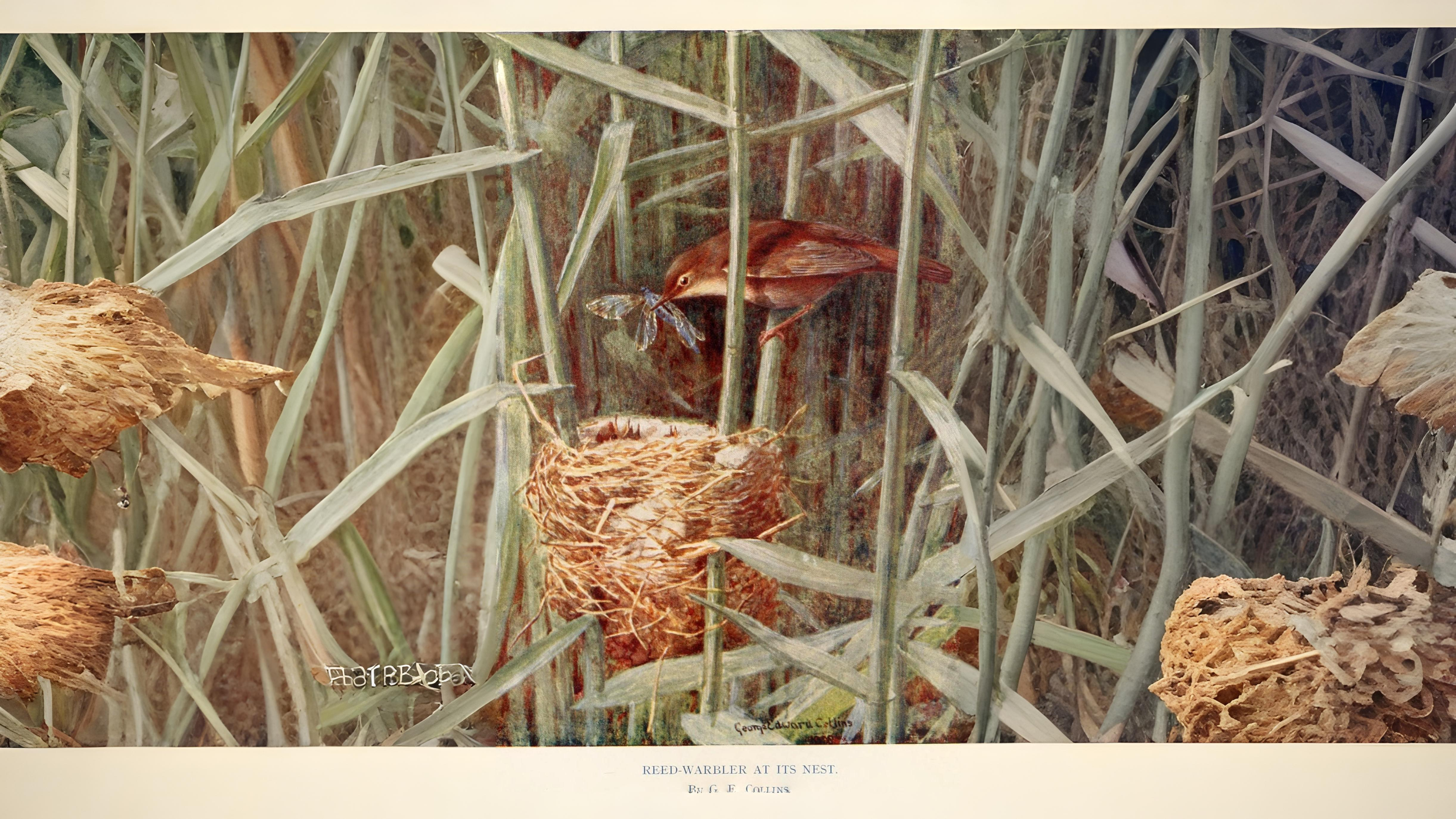
The position chosen for a nest varies enormously. Crows, rooks and magpies build so high in trees their nests are easily seen. Blackbirds build so early their nests are also easily seen, not only by us but by nest stealers who often prey upon their contents. Song thrushes, blackbirds and missel thrushes may already be building their second nest. Later nests are better hidden and therefore more likely to succeed, but in the case of blackbirds they usually have less eggs. Traditionally, linnet nests were the easiest to find – the problem now being to find the linnet. Missel thrushes like to build on strong forks high in a tree whereas wood pigeons prefer more secretive forks inside dark conifers. Turtle doves are renowned for picking precarious forks and even having nests you can see through. Collared doves are well-known for the small number of sticks that they use.
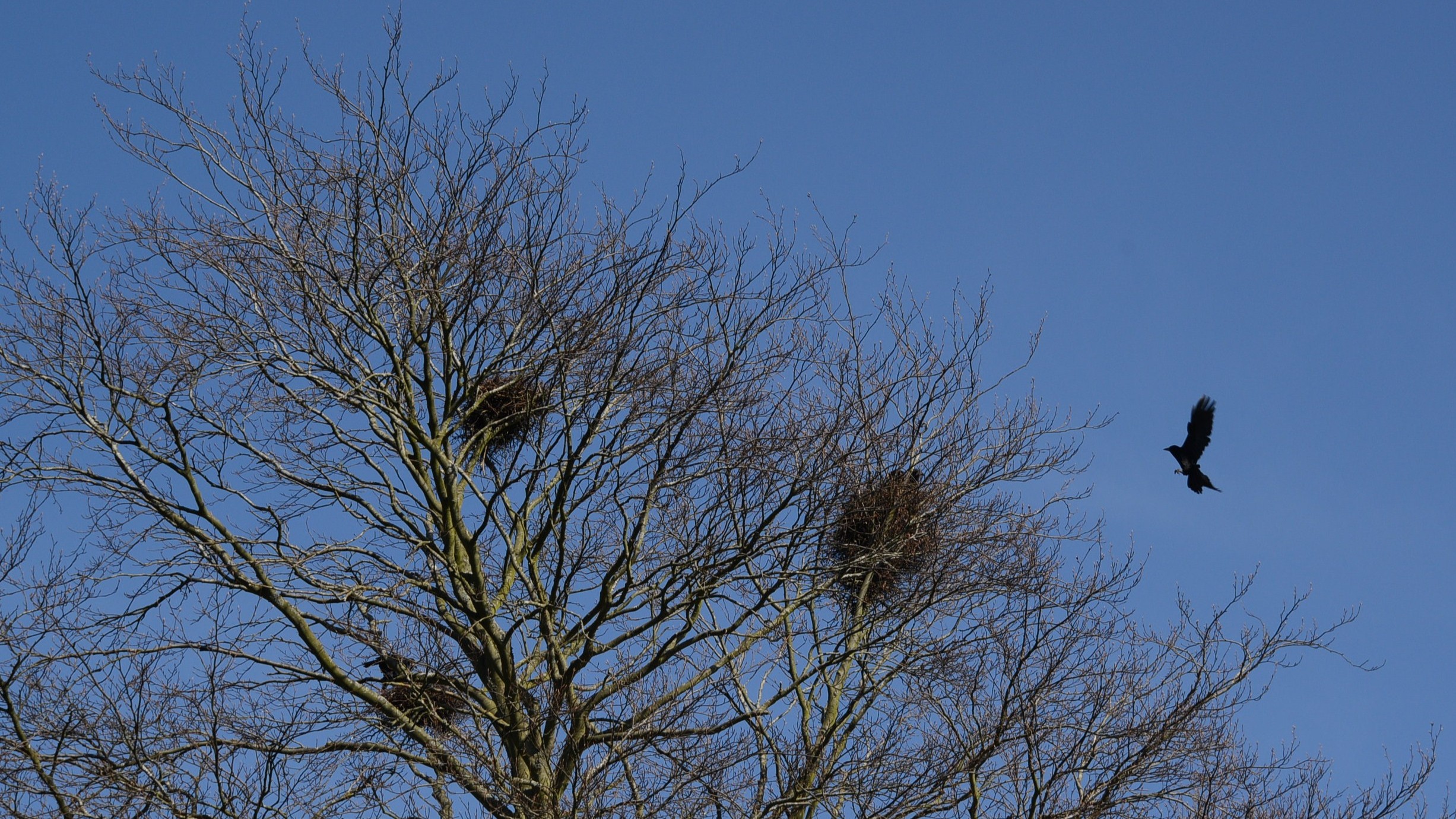

Holes in trees are preferred by owls, nuthatches, starlings, jackdaws and tits, depending upon the hole size and the type of tree. Great spotted woodpeckers are said to prefer old cherry trees and are quite capable of excavating their own hole if one doesn’t exist. Nuthatches carefully plaster up their chosen hole to the exact size that will deter thieves but still just about allow them access. Redstarts are said to prefer ancient oaks, sparrowhawks tall larches and long-tailed tits and goldcrests tall conifers. Lower down, a whole host of other birds show a preference for hedgerows or thickets. Nightingales build their well-hidden nest low down in dense thicket. They tend to sing directly above it often giving away its whereabouts. Robin nests are notoriously difficult to find, occasionally being built at ground level. Other birds preferring the ground are plovers, skylarks and even short-eared owls. Some of these have domed nests so that eggs cannot be seen by circling crows and their fledglings not spied upon by any passing raptors.
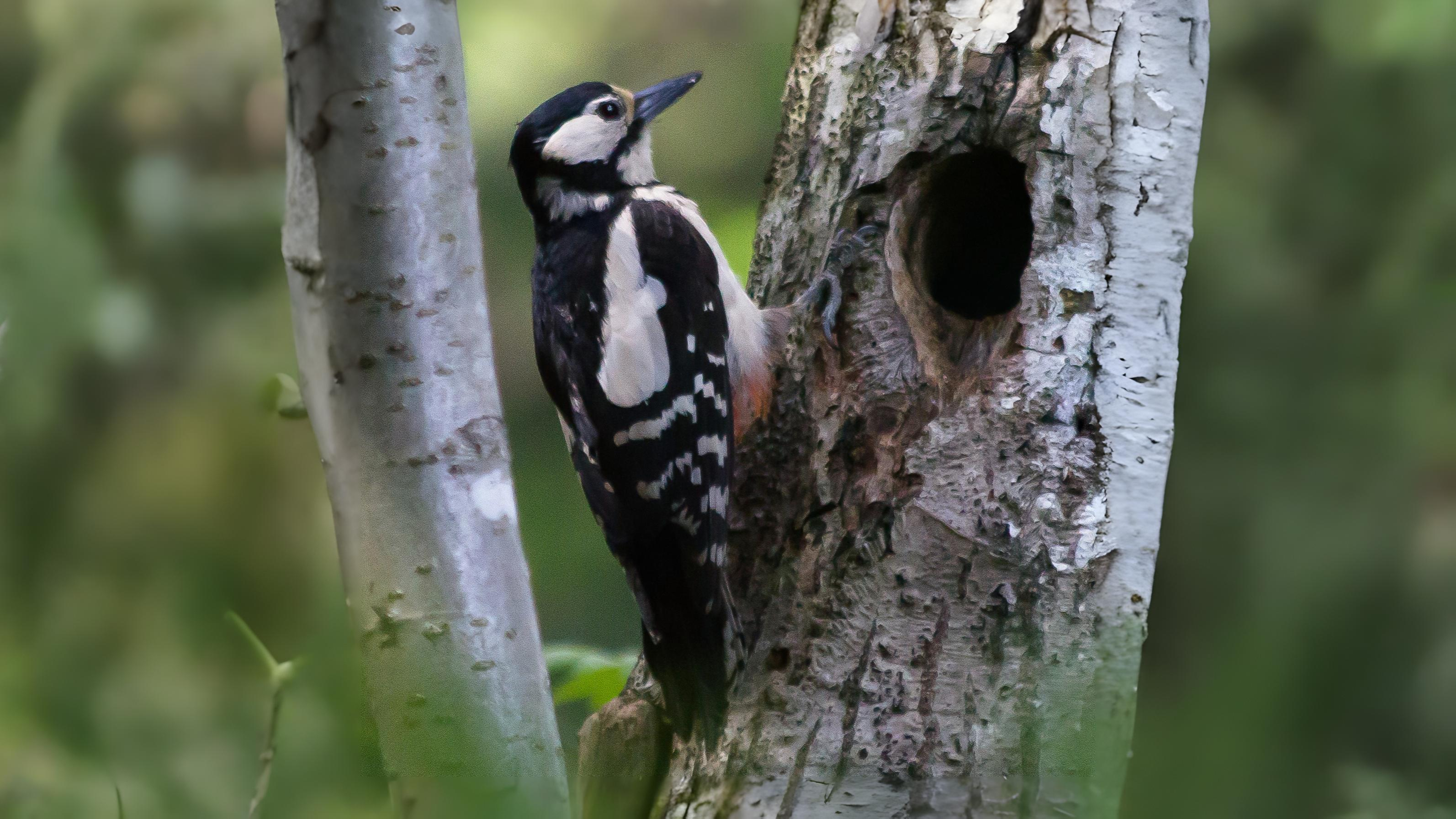
Chiffchaffs and willow warblers also have domed nests with side entrances, accounting for their old name of oven birds. More unusually, spotted flycatchers prefer porches and reed warblers and sedge warblers build their nests around reed stems. Stables and disused barns are preferred by house martins and swallows respectively. The higher, bigger gables on Victorian villas or church towers are favoured by swifts, possibly now partially accounting for their decline as a breeding bird. Often it is just the anxiety notes of the parents that tell you a nest is near. It will only be later in the year when all these nests are abandoned and the leaves have fallen that their intricate constructions can be admired.
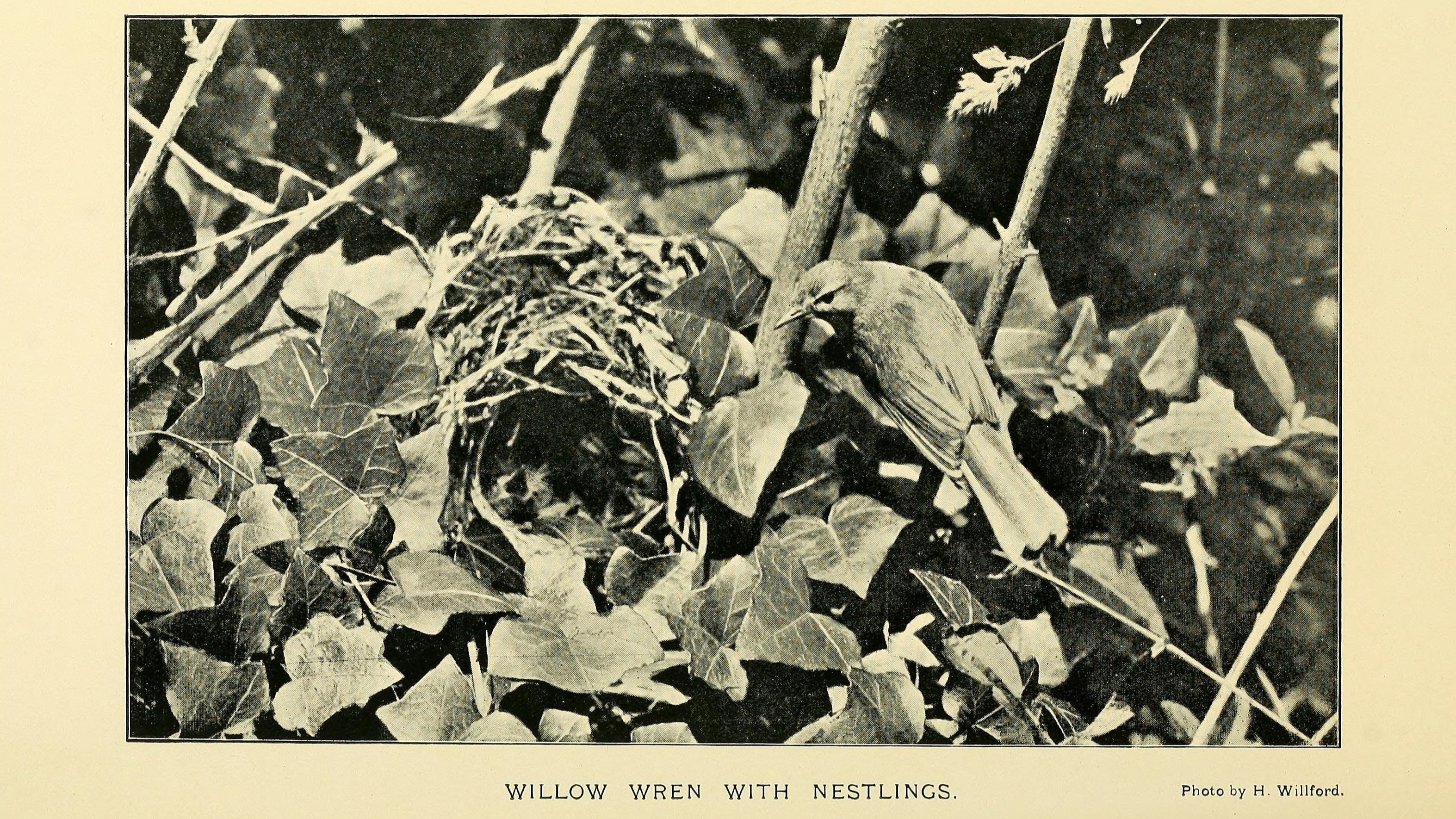

For those who do desire to see a nest being built it is best to stand and watch rooks. They construct a surprisingly deep nest in the full glare of their neighbours and any other onlookers. Blackbird and song thrush nests are among the most commonly encountered. Both have dried mud cups. The cup of the song thrush is smooth to the touch whereas the blackbird’s is rough. When the song thrush applies the mud or wood paste with her beak she presses it down, then smoothes it with her body, producing a bowl worthy of a potter’s wheel. Buzzards decorate the interior of their nests with fresh, green leaves which they periodically renew so that they are always fresh. In the past and possibly in the future, red kites would steal washing to incorporate into their nests. Goldcrests use cobwebs and grass to make supports for their suspended nests and long-tailed tits can sometimes be seen collecting gossamer around window frames for theirs. Nuthatches search out strips of bark to use in their constructions. Woodpigeons seem more careless as you can sometimes see their eggs from below when looking up into the nest.
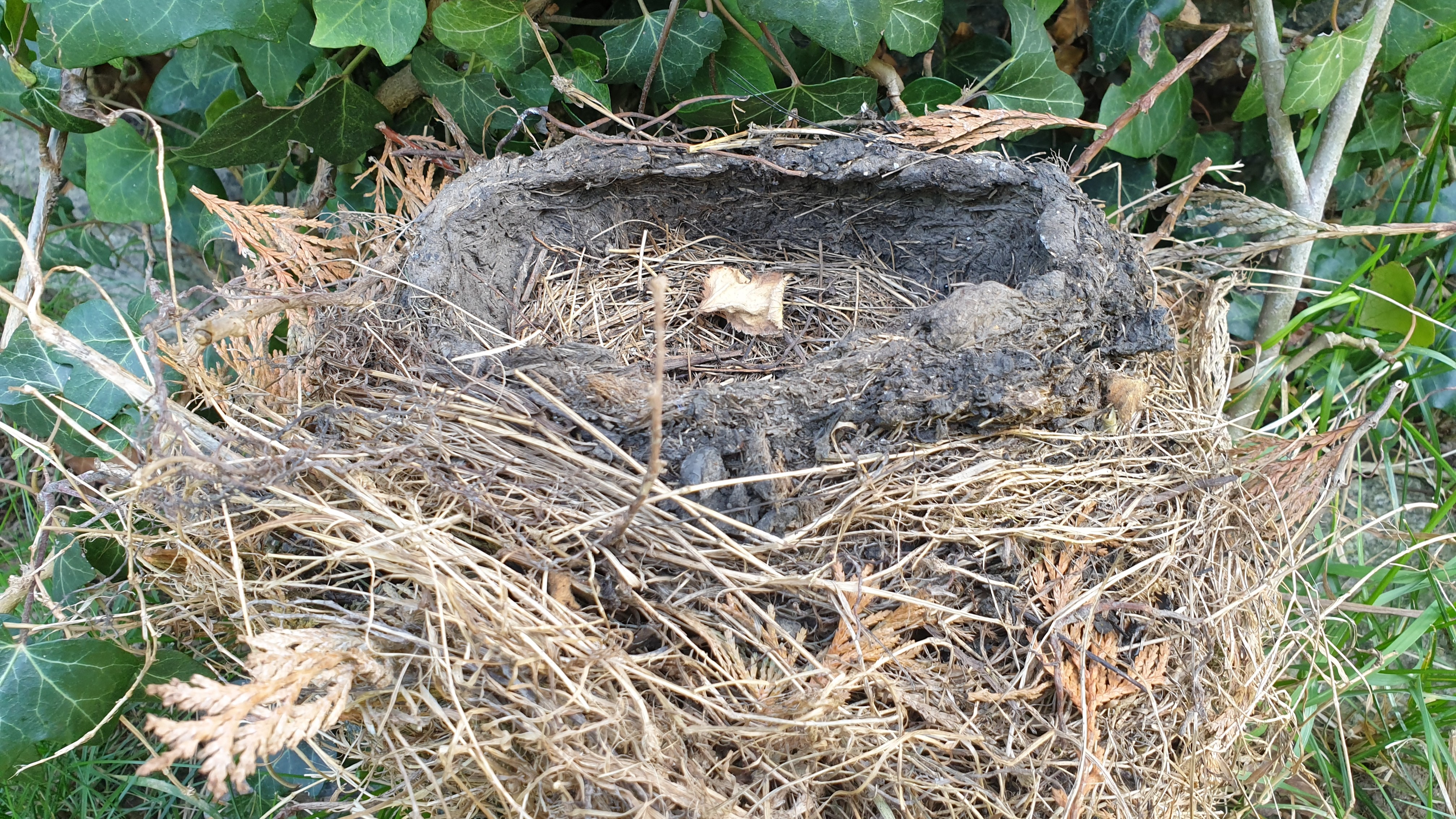
Eider ducks are famous for lining their nests with their own soft down plucked from their chests. Eiders on their nests are unlikely to be seen in London, other than perhaps on Duck Island in St James’s park where some pinioned birds are encouraged to breed. They are renowned for not leaving their eggs, even if touched. If she is coerced to leave, she will leave an unpleasant odour to deter any further investigation. Similarly, ringed plovers will also remain on their eggs sometimes even if the bird is stroked. Some of the first fledglings to be noticed this month are often those of mallards and coots along the Thames.
